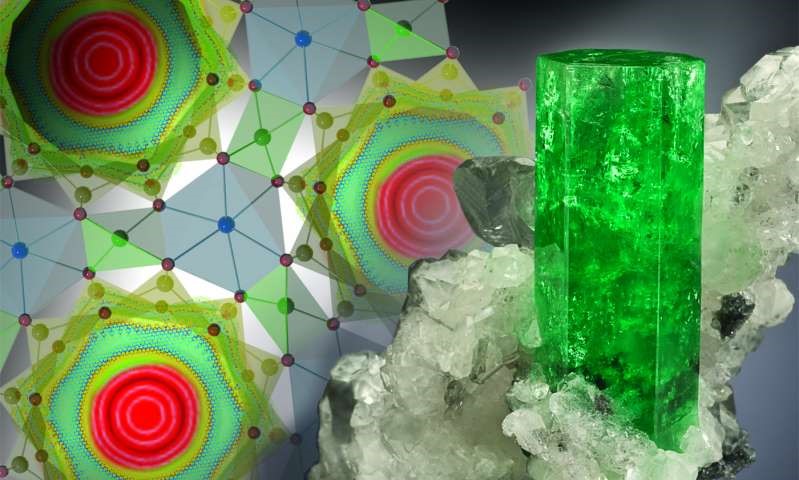
Did you know that water molecules under extreme confinement behave in a manner that’s completely different than any other solid, liquid, or gas? Researchers from the Department of Energy’s Oak Ridge National Laboratory (ORNL) have observed that water occupying the ultra-small nooks and crannies, such as those found in minerals and cell walls, are imbued with some odd characteristics that defy the nature of the classical world.
Describing their findings in a recent paper published in the Physical Review Letters , the team used neutron scattering and computational modeling to observe water molecules nestled between the hexagonal ultra-small channels of the beryl mineral, more commonly known as the emerald. For perspective, the channels measure 5 angstroms across in diameter—one tenth of a billionth of a meter—and 1 angstrom measures approximately the same diameter as a single atom.
When coupled with low temperature, water molecules tunneling at this scale begin exhibiting quantum motion through the separating potential walls, an act which can only occur in the quantum mechanics, not in the macro world of classical physics inhabited by the molecules. Alexander Kolesnikov, one of the researchers involved in the venture, explains:
”This means that the oxygen and hydrogen atoms of the water molecule are ‘delocalized’ and therefore simultaneously present in all six symmetrically equivalent positions in the channel at the same time. It’s one of those phenomena that only occur in quantum mechanics and has no parallel in our everyday experience.” The neutron scattering and computational modeling used in the experiment observed that water molecules in the tunnel state are delocalized around a ring, causing them to assume a unique double top-like shape.
This is the first time such behavior was observed in water molecules, and its implications are not quite fully understood. Still, scientists speculate that its existence will enable them to better understand the thermodynamic properties and behavior of water in ultra-confined spaces, leading to innovations in the ability to mimic natural forms of water diffusion.
Co-author Lawrence Anovtiz foresees that the discovery will prompt a huge debate between materials, biological, geological, and computational scientists as they attempt to understand how the mechanics behind the phenomenon applies to their fields.
“This discovery represents a new fundamental understanding of the behavior of water and the way water utilizes energy,” Anovitz said. “It's also interesting to think that those water molecules in your aquamarine or emerald ring – blue and green varieties of beryl – are undergoing the same quantum tunneling we've seen in our experiments.”
The quantum tunneling of atomic hydrogen has previously been observed in other systems, but the ORNL study is first to discover this behavior in water molecules.
Advertisement
Learn more about Electronic Products Magazine





